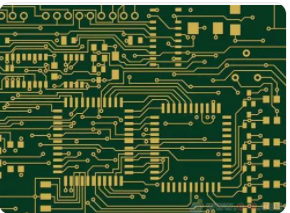1. Should the dead copper be removed in PCB design?
Some people say that it should be removed. The reasons are probably: 1. It will cause EMI problems. 2. Enhance the ability to engage in interference. 3. Dead copper is useless.
Some people say that it should be kept. The reasons are probably: 1. Sometimes a large blank is not good-looking. 2. Increase the mechanical properties of the board to avoid uneven bending.
1). We don’t want to die of copper (island), because this island forms an antenna effect here. If the radiation intensity of the surrounding traces is large, it will increase the surrounding radiation intensity; and it will form the antenna’s receiving effect, which will affect the surroundings. The wire introduces electromagnetic interference.
2), we can delete some small islands. If we want to keep the copper, the island should be well connected to GND through the ground hole to form a shield.
3) In the case of high frequency, the distributed capacitance of the wiring on the printed circuit board will work. When the length is greater than 1/20 of the corresponding wavelength of the noise frequency, an antenna effect will occur, and the noise will be emitted through the wiring. If there is a poorly grounded copper pour in the PCB board, the copper pour becomes a tool for noise transmission. Therefore, in a high-frequency circuit, do not think that the ground wire is connected to the ground. This is the "ground". "Line", must be less than λ/20, punch through holes in the wiring, and "good ground" with the ground plane of the multilayer board. If the copper coating is handled properly, the copper coating not only increases the current, but also plays a dual role of shielding interference.
4). By drilling the ground hole to retain the copper coating of the island, not only can it play a role in shielding interference, but it can indeed prevent PCB deformation.

2. What effect does the common pad have on PCB soldering?
SMT pad design is a very critical part of PCB design. It determines the soldering position of the components on the PCB, the reliability of the solder joints, the soldering defects that may occur during the soldering process, the clarity, testability and maintainability Waiting to play a significant role. If the PCB pad design is correct, a small amount of skew during mounting can be corrected due to the self-correction effect of the surface tension of the molten solder during reflow soldering. On the contrary, if the PCB pad design is incorrect, even if the placement position is very accurate, there will be soldering defects such as component displacement and tombstone after reflow soldering. Therefore, pad design is one of the key factors that determine the manufacturability of surface mount components. Common pads are a "common disease and frequently-occurring disease" in PCB design, and it is also one of the main factors that cause hidden dangers in PCB soldering quality.
1) After the chip components are soldered on the same pad, if the pin plug-in components or wiring are soldered again, there is a hidden danger of false soldering during the secondary soldering.
2) Limit the number of repairs during subsequent commissioning, testing and after-sales maintenance.
3). When repairing, unsoldering a component, the surrounding components of the same pad are all unsoldered.
4) When the pad is used in common, the stress on the pad is too large, causing the pad to peel off during soldering.
5) The same pad is shared between the components, the amount of tin is too much, the surface tension is asymmetric after melting, the components are pulled to one side, causing displacement or tombstones.
6) Similar to the non-standard use of other pads, the main reason is that only the circuit characteristics are considered and the area or space is limited, which leads to a lot of component installation and solder joint defects in the assembly and welding process, which ultimately affects the reliability of the circuit work Great influence.